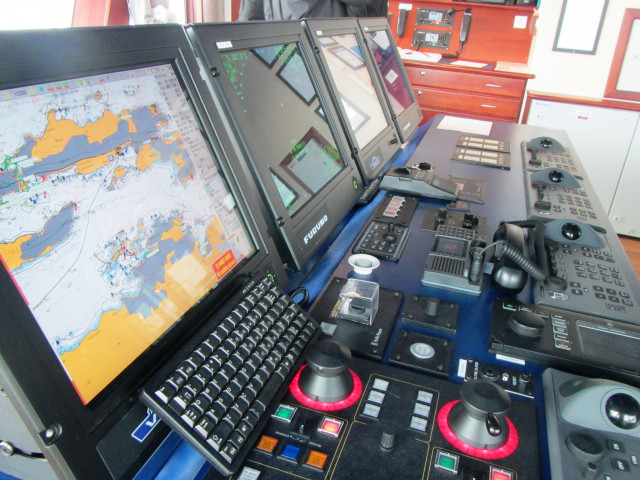Navigation
Charts and compasses are still important, but modern ships also rely on a number of digital aids.
 From OV Bøkfjord.
From OV Bøkfjord.
AIS – Automatic Identification System
Ships with AIS equipment installed on board transmit a lot of information about themselves,
including the ship’s name, type of vessel, position and speed. Additionally, they transmit
information about the ship’s last port of call and where it is bound. AIS provides Vessel Traffic Service Centres with vital information about marine traffic and is crucial to safety and the environment.
When the pilot comes aboard, he or she brings along a pilot case containing a PC which is connected to the vessels «pilot plug». This allows the pilot and the navigator to steer the vessel by means of updated sea charts. The navigation computer on the MV “Gamle Oksøy” is such a “pilot case”.
The “Gamle Oksøy” has also been used in the training of new pilots.
VHF
Communication at sea takes place with the help of maritime VHF radio (VHF = Very High Frequency). VHF consists of a number of channels used for different purposes. The most important one is Channel 16, which is the international emergency and calling channel. Mariners are obliged
to listen to this channel.
When spelling out words at sea, the phonetic alphabet is used:
Alpha, Bravo, Charlie, Delta, Echo, Foxtrot, Golf, Hotel, India, Juliet, Kilo, Lima, Mike, November,
Oscar, Papa, Quebec, Romeo, Sierra, Tango, Uniform, Victor, Whiskey, X-ray, Yankee, Zulu.
In Norway we also use Ægir, Ørnulf and Ågot corresponding to the three extra letters
in our alphabet, æ, ø and å.